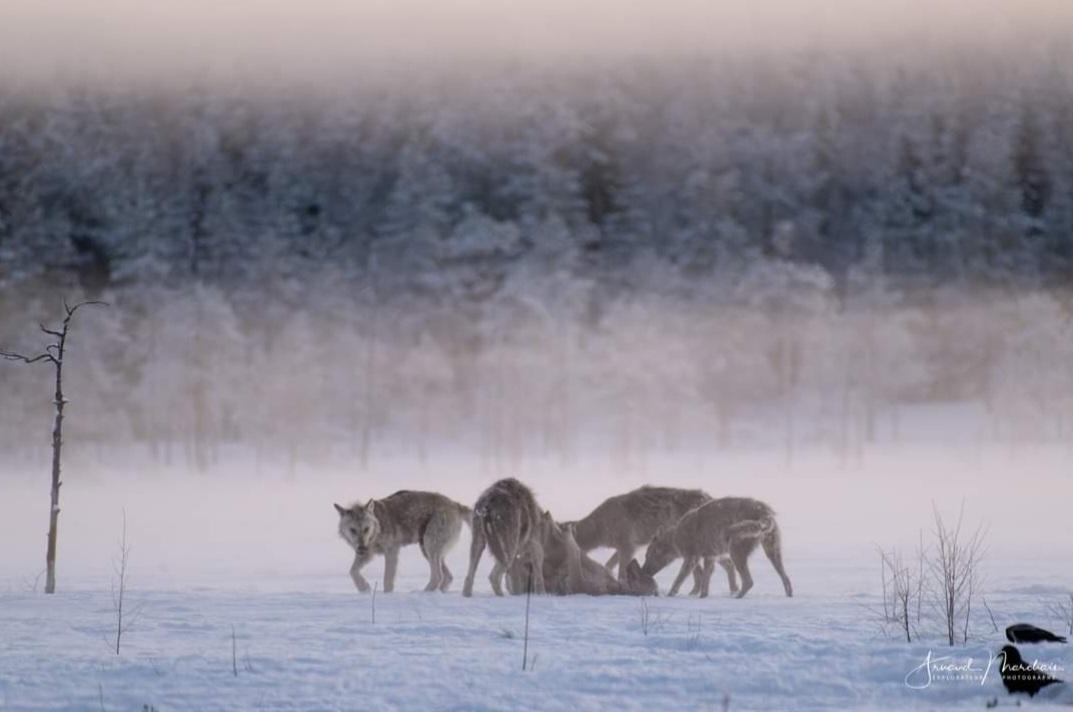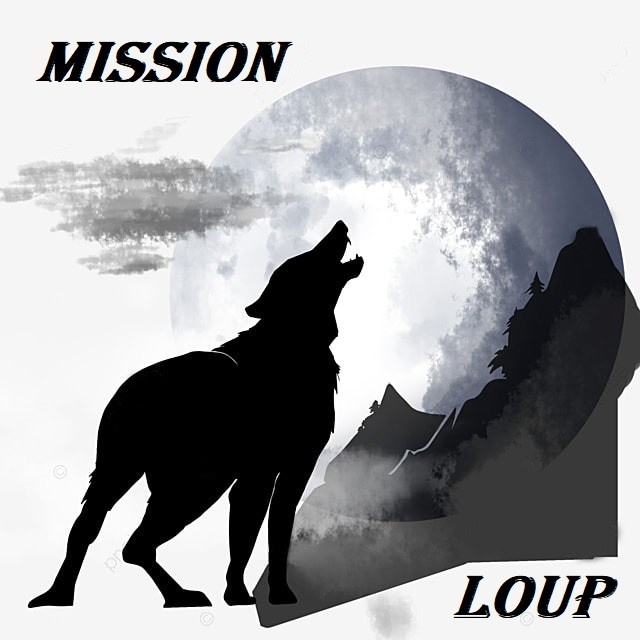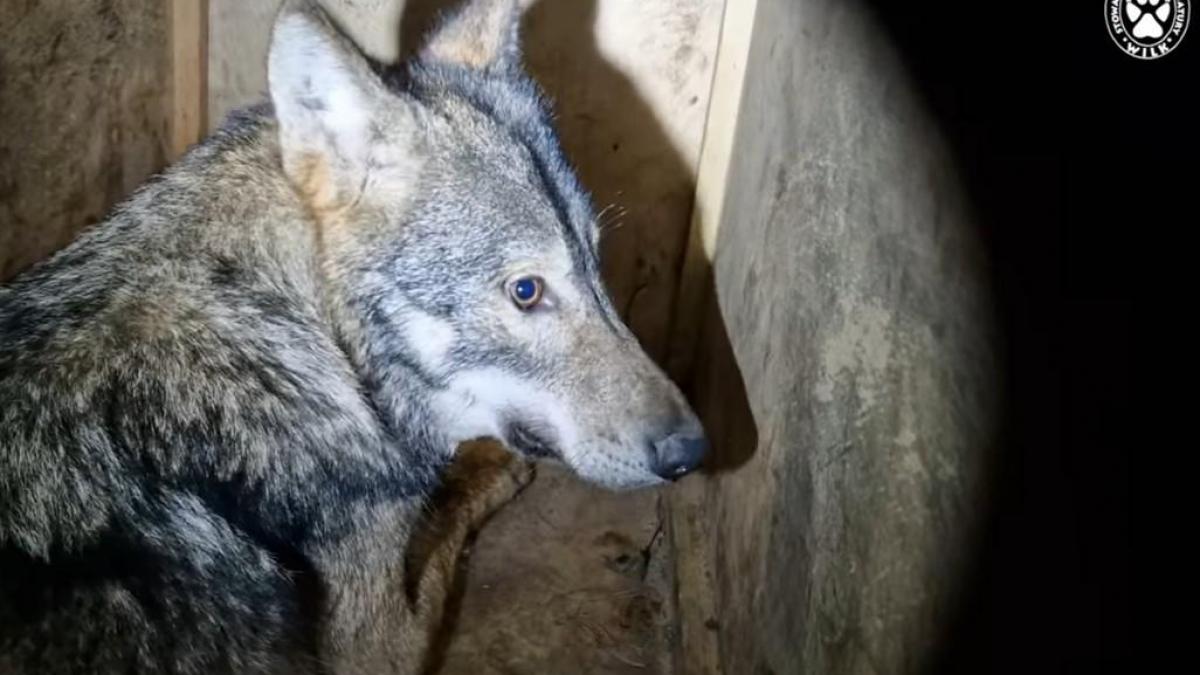In previous articles, we've explored the physical and strategic capabilities of wolves on the hunt. Now let's talk about the steps involved in hunting prey. On this point, over the decades and the studies carried out by many leading wolf specialists and biologists, opinions have differed. First of all, the hunting phases were established as follows: search, pursue and capture (Holling, MacArthur, Pianka - 1966). David Mech, in the 1970s, carried out extensive observation on elk and bison (over 2,000 hours in the field) and thus labeled the phases as follows: the stalk, the encounter, the rush and the chase. In 2007, D. MacNulty proposed an analysis of predation behavior, defining the stages as follows: search, approach, watch, attack-group, attack-individual and capture. This analysis was then tested by researchers on five other large carnivore species, as well as on five wolf populations other than the Yellowstone population (the most frequently studied since wolves were reintroduced to this natural park in Montana, USA, in 1995). MacNulty's analysis has proved to be very appropriate and remains, to this day, the most accurate representation of the wolves' hunting stages.
The search part of the hunt occurs almost anytime wolves are travelling. They constantly sift their surrounding for the sight, smell, or sound of prey as they make their way around their territory. Any prey they detect might become a fair game. At times, while seaching, wolves approach prey without having pinpointed its location, like a deer in a dense forest. Other times, they approach areas where experience tells them prey reside, such as beavers or young hares. In such cases, the search phase consists of simply moving towards the area, sometimes content to watch or stalk their prey. The wolves then wait until the prey is in a vulnerable position and charge ahead. This phase has been labelled "the launch of the attack" by D. Mech and "the attack phase" by D. MacNulty.
With prey species in open spaces (deer, caribou, bison), wolves must watch and study their prey. With animals living in a group/guard, we can then clearly see the group attack phase, which then passes to the attack of an individual, often the one who has made the wrong decision (direction, moving away from the group) or who is inexperienced, old, ill, wounded etc. Both types of attack may involve chasing or lunging, depending on whether the prey flees or, as we saw earlier for some, stops and confronts the wolves.
Attacking an individual is the most critical phase, when the predator must critically size up the situation, the risks to its own safety and weigh up the pros and cons. Pursuit is a major investment of energy, and it's not uncommon for the predator to rest before eating after capturing a hare. In the case of large prey, wolves sometimes wound the animal, rest - sometimes for several hours - before attacking it again and finishing it off. As we've seen, wolves have a high capacity for assessing the cost/benefit ratio, and are quick to judge the situation, i.e. whether the hunt is worthwhile or not.
Despite this, it's important to know that the outcome of a hunt is more often a failure than a success. This depends on many factors, such as the species, the season, the environment, the circumstances, the situation and so on. Wolves often have difficulty catching prey. Nine out of fourteen studies reported success rates ranging from 1 to 9%, and others from 13 to 56%, depending on the number of prey groups involved. Depending on the number of prey groups attacked, the success rate for killing a single individual ranged from 10% to 49%.
So, wolves literally lead a feast or famine existence. However, they are well adapted to this type of lifestyle. The longest period a wolf has gone without eating is 17 days. A dog, on the other hand, survived 100 days without eating, losing 63% of its body weight. That's why, when a wolf succeeds in killing its prey, it can eat up to 10 kg of meat. Wolves that fail to hunt for too long may also resort to scavenging or scavenging to keep themselves alive.
The process of prey predation in wolves, be they hares, deer, caribou, bison or any other species, is just one of a myriad of complex phenomena throughout nature. However, it is the key to the wolf's survival, and for anyone interested in wolves, it's a fascinating process. Understanding the reality of the wolf's hunting behavior, in particular the many limits to its predatory abilities, is essential to understanding the wolf and its interaction with prey.
Article : TT - Wolf Mission
Photo : Arnaud Marchais
Réf. : D. Mech, D. MacNulty, L. Boitani, Crisler, Makridin, Howe, Peterson, Ciucci


